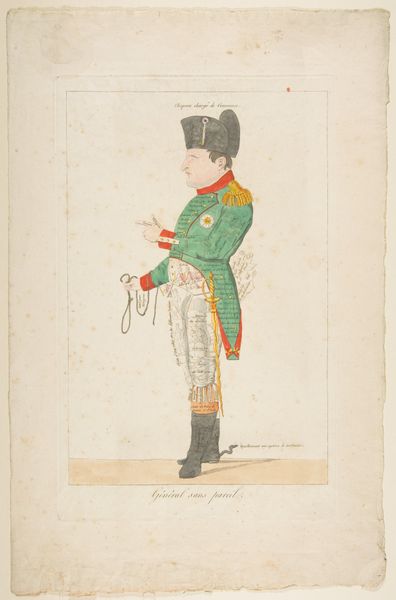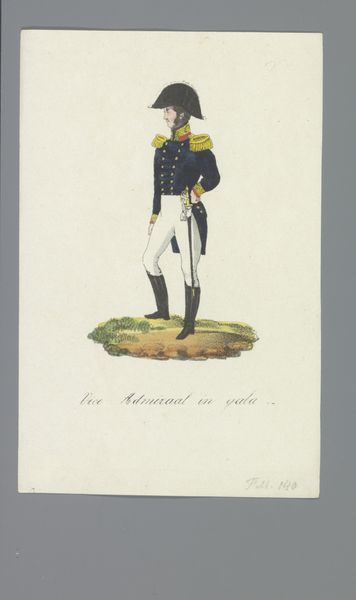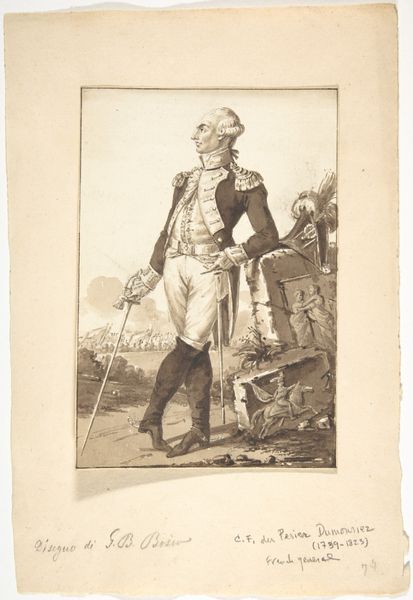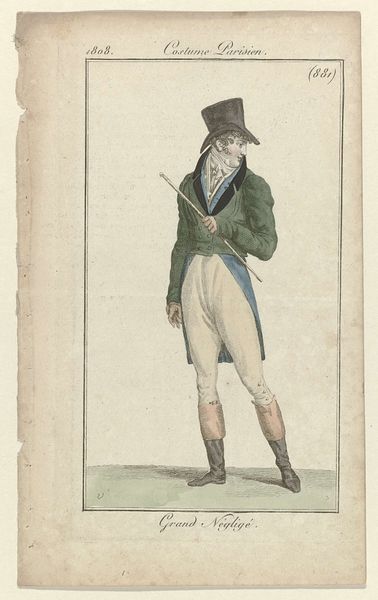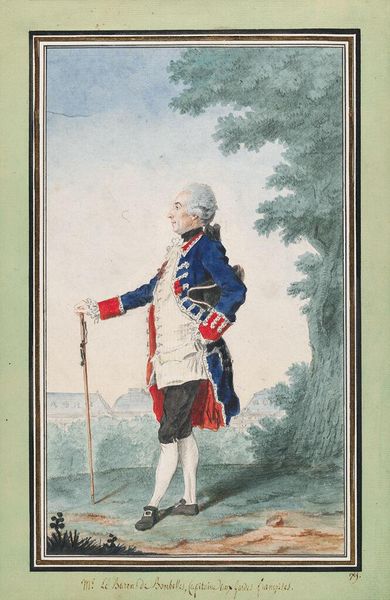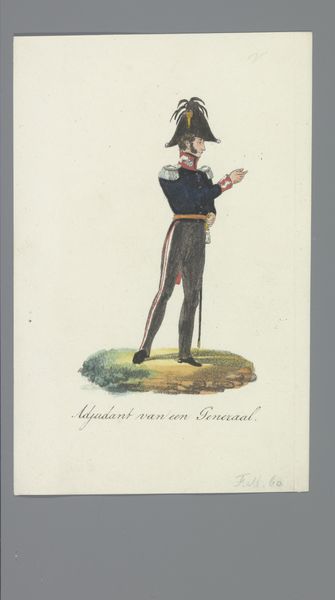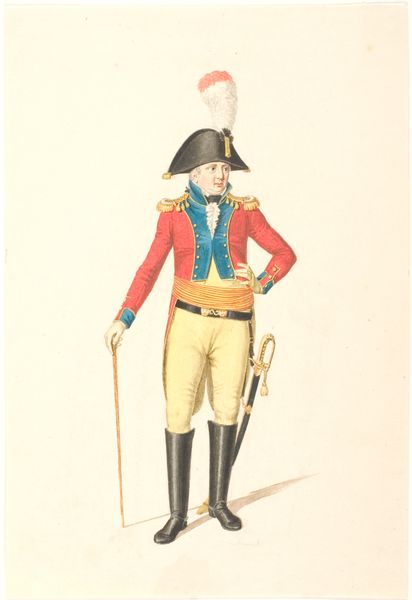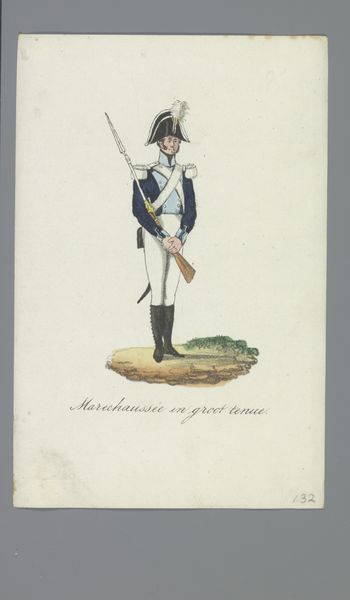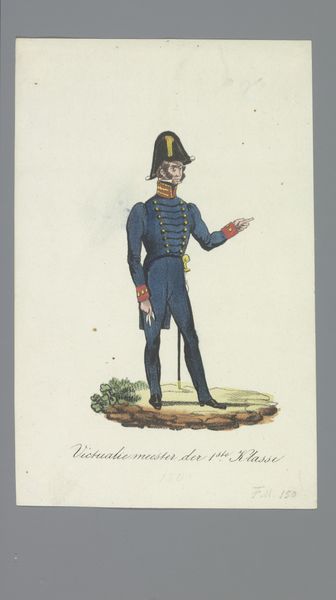
drawing, print, watercolor
#
portrait
#
drawing
#
neoclacissism
# print
#
watercolor
#
historical photography
#
historical fashion
#
romanticism
#
men
#
watercolour illustration
#
history-painting
Dimensions: Plate: 15 15/16 × 12 1/2 in. (40.5 × 31.7 cm) Sheet: 18 5/16 × 13 3/4 in. (46.5 × 35 cm)
Copyright: Public Domain
Curator: Looking at this image, I immediately feel a certain sense of… standoffishness. His posture, arms crossed, conveys an air of invincibility. Editor: Indeed. We are looking at a print entitled "Napoleon I", created in 1807 by Louis Philibert Debucourt, who employed watercolor and engraving. The artwork now resides here at The Metropolitan Museum of Art. It’s an example of Neoclassicism melding with Romanticism, attempting to capture both the idealized strength and the individual character of Napoleon. Curator: The use of watercolor gives a surprisingly delicate feel to a subject so tied to warfare. Yet, this almost softness undercuts the machismo usually associated with the emperor. Is Debucourt suggesting a vulnerability, a hidden sensitivity beneath the power? Editor: It’s complex. This image wasn't just art; it was statecraft. Think of Napoleon’s careful cultivation of his image. The portraits, the staged events—they all fed into a persona of the enlightened leader. Debucourt’s work participates in this. While the watercolor and engraving give it an accessible feel—a far cry from grand oil paintings meant for palaces—it also reinforces Napoleon’s vision of himself for public consumption. Curator: The pose then… his folded arms aren't just about strength, but potentially resistance. Resistance to the expectations, to the crushing weight of leadership? We must think critically about whose interests are being served when we gaze on the supposed "greatness" of a leader in history. How does the artwork invite viewers to question not only Napoleon’s intentions, but also their own potential investment in power dynamics? Editor: Right, and Debucourt, as an artist working during Napoleon’s reign, had to navigate the prevailing socio-political currents. The printmaking industry, at the time, served as a powerful tool for disseminating propaganda and reinforcing the dominant ideology. He had to balance artistic expression with the need for patronage and, perhaps, self-preservation. Curator: That shifts my understanding significantly. I see it now as a record of an ongoing negotiation, where Napoleon’s self-image, the artist’s interpretation, and public expectation collide. The quiet intimacy, for all its delicate colors, becomes a fraught space. Editor: Precisely. So, considering "Napoleon I" today demands that we appreciate both Debucourt's artistic talents and the political theatre of the Napoleonic era in France.
Comments
No comments
Be the first to comment and join the conversation on the ultimate creative platform.
